If you've seen the limited-time welcome bonuses and the rewards you could be earning, you may have considered the strategy called credit card churning.
Putting it simply, credit card churning is signing up for a new credit card, getting the welcome bonus, and switching cards to take advantage of those cards’ welcome bonuses. It’s more than just juggling or combining a couple credit cards since the strategy requires strict discipline for it to benefit you financially.
Done right, it could make you thousands of dollars in cash back rewards, bonus points, or travel incentives. However, there are risks and credit card churning could damage your credit.
To learn more about this financial tactic, we’ll explain how it works in detail and weigh the pros and cons.
Never miss an amazing deal again + get our bonus 250+ page eBook for FREE. Join 50,000 other Canadians who receive our weekly newsletter – learn more.
What is credit card churning?
Credit card churning is signing up for a new credit card to take advantage of a great welcome bonus, only to stop using the card once you receive the bonus and repeat the cycle. Savvy shoppers have found a way to get a never-ending chain of increased bonuses.
While there aren’t laws against taking maximum advantage of promotional offers, banks and credit card issuers don’t love it – and they may go so far as to close your accounts if you’re caught doing it.
Here’s how credit card churning works:
- Sign up for a new credit card
- Complete the actions to receive your maximum welcome bonus
- Cancel the card before you have to pay the annual fee for the next year
This is oversimplifying things a bit, of course – you’ll need to read the fine print and keep track of spending requirements. And if the card you choose doesn’t have a first-year-free offer, you’ll need to pay that fee.
Credit card churning in Canada: An example
Credit card bonus rewards can come in the form of bonus travel miles, increased cash back earn rates, and more. Let’s dig into an example to illustrate how it all comes together.
Imagine that you apply for and open the following cards:
- Card A offers 30,000 bonus reward points after you spend $2,000 in the first 6 months you have the card
- Card B offers 10% cash back on groceries in the first 120 days, up to a total of $2,500 spent
- Card C offers a bonus 2,000 airline miles after you spend $3,000 in the first 3 months
To take full advantage of these 3 welcome offers, you have to spend:
- $2,000 on card A by Dec 31st
- $2,500 on groceries on card B by Oct 29th
- $3,000 on card C by Sept 30th
To do this, you’ll have to pay close attention to how much you’ve spent, when, and on which card. Then, you’ll have to wait a few months for the welcome bonuses to arrive.
The work doesn’t stop there, though. You’ll have to pay off all of the purchases to avoid interest charges, cancel the cards, and then apply for new ones to repeat the cycle all over again.
Perhaps you’ll earn a theoretical $400 or $500 worth of bonus rewards – but you spent $7,500 in less than 6 months and did a lot of spending tracking to get them
And remember: our example assumes you’re not paying annual fees, interest, or forgetting to cancel a card.
Best practices for credit card churning in Canada
Alright, so those examples may not have put credit card churning in its best light. But if you’re still interested in credit card churning (perhaps you’re one of the 70,000 members of Reddit’s r/ChurningCanada), there are some things to keep in mind.
- Income requirements. Most cards have income requirements of some kind. Doing a bit of research about eligibility requirements for a credit card before applying can save you time and frustration.
- Credit score. The more premium the card, the higher credit score you’ll typically need to qualify. Multiple hard credit checks (like those done when you apply for new cards) can bring your score down temporarily. Similarly, closing accounts can negatively impact your score since it a) reduces your available credit, b) increases your credit utilization, and c) can shorten your credit history if you cancel your oldest cards.
- Bonus amounts. Return on investment is priority 0 with credit card churning, so be sure to spend your time on bonuses that are big enough to be worthwhile.
- Spending requirements. Look for bonuses that kick in "after your first purchase" or after relatively low spend amounts. Note that lower requirements may mean lower bonuses, so be sure to weigh the risk with the reward.
- Reward terms. In some cases, you’ll lose rewards that you haven’t used when you cancel the card. Do your research and ensure that you can use or transfer any earned rewards before you close the account
- Annual fee. If a card has a welcome bonus worth $200 but you have to pay a $150 fee to have the card, that bonus is really only worth $50. This goes against the "only apply for cards with big bonuses" rule once you do the math. Aim to only apply for cards that waive the fee for the first year.
- Fine print. This is a newbie mistake that you’ll probably only make once but be sure to read through all the fine print in the credit card agreement before you apply. Credit card companies are well aware of churning and typically have something buried in the fine print that will make churning more difficult (like only earning a bonus for that card once).
Now for some pro tips to help you make the most of your credit card churning adventures:
- Focus on a small number of rewards programs. Figure out which rewards programs make the most sense for you, your family, and your spending habits. If you don’t travel a lot, then maximizing your Aeroplan rewards isn’t the best choice – but flexible Scene+ welcome bonuses might be perfect.
- Hit your minimum spends by buying gift cards. If you’re approaching a spending deadline or want to hit your minimum spend all in one go, you might be able to buy gift cards that you can use later. Check the fine print, though – some credit cards exclude gift card purchases from eligible spending.
- Get supplementary cards for family members. If you need help hitting your minimum spend, adding an authorized user can help ramp that up. Remember that some cards have fees for supplemental users so check your card details.
- Pay your card balance in full every month. The whole point of churning credit cards is to maximize your rewards while minimizing the cost to you. The second you start paying interest on your credit cards, you’re cutting into your own potential profits.
Is credit card churning worth it?
Whether credit card churning is worth it is up to you – but we don’t recommend it.
The benefits of churning are obvious but the risks are high. You can damage your relationship with banks, negatively impact your credit score, and even end up being unable to secure a credit card in the future.
Nevertheless, here’s a rundown of the pros and cons.
Pro: You can earn lots of rewards really quickly
Credit card companies are keen on attracting as many new, qualified customers to their services as possible – so welcome bonuses on credit cards can be very generous.
If you can take advantage of these offers while avoiding any of the downsides, it can be a great little bonus.
Pro: Cards often have extra perks and benefits
Churning a card to get the welcome bonus is great, but you can also take advantage of all the perks and benefits of that card while you’re using it. This might include:
- Free airport lounge access
- Complimentary roadside assistance
- Purchase protection or extended warranty coverage
- Travel insurance
- Rental car discounts
- Exclusive access to events
Pro: You can maximize the return on your existing spending
If your regular credit card offers 1% cash back on groceries, but there’s a card that has a welcome bonus of 10% back on groceries for 3 months, that’s an obvious win. Credit card welcome bonuses can give you easy ways to maximize what you get back on your regular everyday spending.
Con: You have to spend money
To qualify for a lot of these welcome bonuses, you typically need to hit a required amount of spending in a specific time period – usually 3 to 6 months.
If you already meet this spend with your everyday expenses, that’s one thing. But striving to meet the minimum spend could have you buying things you don’t need. Is the cash back bonus going to be completely swallowed up by how much you spent to get it?
Con: You can damage your credit score
Hard credit checks, opening and closing lots of new accounts, having a roller coaster of a credit utilization ratio… all of these things can negatively affect your credit score.
And it is possible that you could end up in a hole, paying interest on credit card debt you can’t really afford, either because you overextended yourself or because an emergency situation arose. Credit card debt is never fun to have so it pays to err on the side of caution.
Con: Credit card churning takes a lot of time and attention to do well
If you tend to fly by the seat of your pants, credit card churning may not be for you. It’s easy to lose track of cards, spending requirements, deadlines, and other factors (like when those pesky annual fees are going to kick in).
If you’re not a detail-oriented person, you’re probably going to miss the bonus time limit, get dinged for fees, or end up paying interest. In short: it will be more trouble than it’s worth.
Con: You can get banned by the credit card issuer
Credit card issuers are here to make money. If they notice that you’re clearly taking advantage of their welcome bonuses and costing them money in the long run, they can refuse to issue you cards.
And even if they don’t ban you entirely, they’ll likely claw back any rewards they issued while you were churning cards.
So be cautious: Don’t go crazy opening and closing accounts in quick succession and read the fine print. There can be some pretty obscure little rules in there and you don’t want to break any of them by accident.
Con: You may not get approved
If your credit score isn’t Very Good or higher, you may be denied for cards that offer worthwhile sign-up bonuses.
Do your research and ensure your credit score and income put you at least within the ballpark of getting approved. If not, you’ll be wasting your time and your credit score may take a hit for no good reason.
Con: It’s not usually worth the time and effort
The average person won’t get enough value out of credit card churning to make it worthwhile. Your time is better invested doing almost anything else that will make you money, save you money, or (better yet) make you happy.
The best welcome bonuses right now
You won’t need to churn credit cards when you have options that reward you with bonus offers and have amazing regular earn rates. If you’re looking for a go-to credit card, consider these credit cards with current welcome bonuses.
1. Best credit card in Canada – up to 15,000 bonus points

The American Express Cobalt Card is our #1 ranked credit card in Canada – and has been for 5 years running.
The card offers a generous welcome bonus of 1,250 bonus points every month you spend $750 in the first year. That's a total of 15,000 points worth up to $300. Each point is super valuable and best used for travel.
Take note: The annual fee isn’t waived so you’ll be paying 15.99 per month for this card.
2. Up to 50,000 bonus points + first year free

If you love customizing your rewards, you’ll want to check out the Scotiabank Gold American Express Card. The welcome bonus of up to 50,000 points after spending $2,000 in the first 3 months and $7,500 in the first year is worth $500 when redeemed for travel through Scene+. Plus, the annual fee of $120 is waived for the first year and there’s a low personal income requirement of $12,000.
3. Up to 90,000 100,000 bonus points + 4 free lounge passes

If you’re looking for a great welcome offer and great perks, the BMO Ascend World Elite Mastercard is a natural choice. The welcome bonus includes up to 90,000 100,000 points after spending $4,500 in the first 3 months and $2,500 every month for the next 12 months. Redeemed for travel through BMO Rewards, those 100,000 points are worth $670.
You’ll also get a Mastercard Travel Pass with DragonPass membership that includes 4 lounge passes annually, 14 types of insurance, and the annual fee of $150 waived for the first year.
4. Up to 165,000 bonus points + an annual $100 travel credit

The TD First Class Travel Visa Infinite Card offers a welcome bonus of 165,000 TD points after spending $5,000 in the first 180 days. When you redeem them through Expedia For TD, these points are worth $825. The card also offers unique perks like a 10% bonus on the points earned each year on your anniversary (up to a maximum of 10,000 points) and an annual $100 travel credit to use with Expedia For TD.
The annual fee is just $139, which is rebated with the first-year-free offer.
FAQ
What is churning in Canada?
Credit card churning refers to taking out a credit card specifically to get the welcome bonus, then cancelling the card only to open another one to get a new welcome bonus.
Is credit card churning illegal in Canada?
Churning credit cards is not illegal in Canada – but it comes with a lot of risk and is ethically questionable since it ends up forcing credit card companies to increase costs for everyone.
Is churning bad for your credit score?
Hard credit checks, opening and closing new credit card accounts, and a fluctuating credit utilization can all negatively impact your credit score. This is just one of the reasons that credit card churning typically isn’t worth the risk.
Is credit card churning worth it?
If you’re really good at it, you can rack up some serious rewards quickly and for minimal financial cost – but you have to be diligent in your record keeping, have a credit score to support this type of activity, and have enough income to pay off your purchases before interest or fees kick in. For the vast majority of people, credit card churning is risky and not worthwhile. It’s best to find a couple of credit cards that give you great welcome bonuses and then continue to reward you well for your everyday spending.
Can you credit card churn without hurting your credit score?
In theory, you can credit card churn without damaging your credit score – but it’s not easy. You’ll be subjecting yourself to multiple hard credit checks, varying credit utilization, and quite a lot of spending in a short period of time.
creditcardGenius is the only tool that compares 126+ features of 231 Canadian credit cards using math-based ratings and rankings that respond to your needs, instantly. Take our quiz and see which of Canada's 231 cards is for you.



 ×8 Award winner
×8 Award winner  $100 GeniusCash + Earn up to 15,000 Welcome Bonus Membership Rewards® Points.*
$100 GeniusCash + Earn up to 15,000 Welcome Bonus Membership Rewards® Points.*
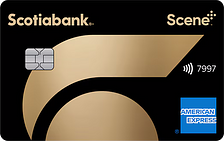







 GC:
GC: 

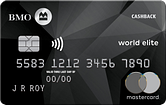
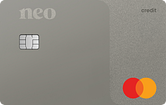
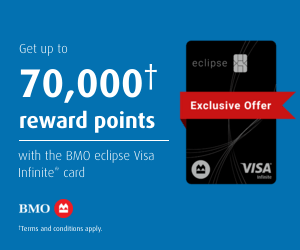







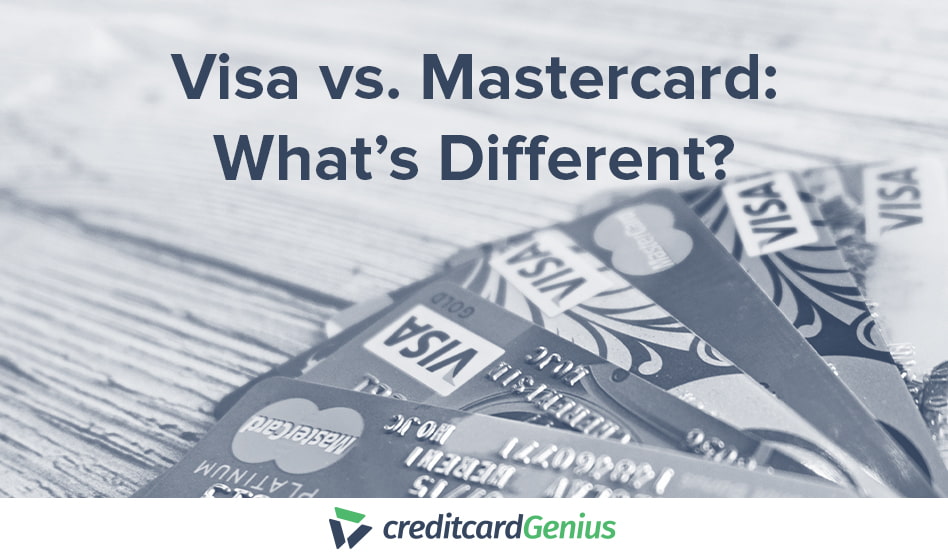
.png)




















Comments
Leave a comment
Required fields are marked with *. Your email address will not be published.
Showing 5 comments